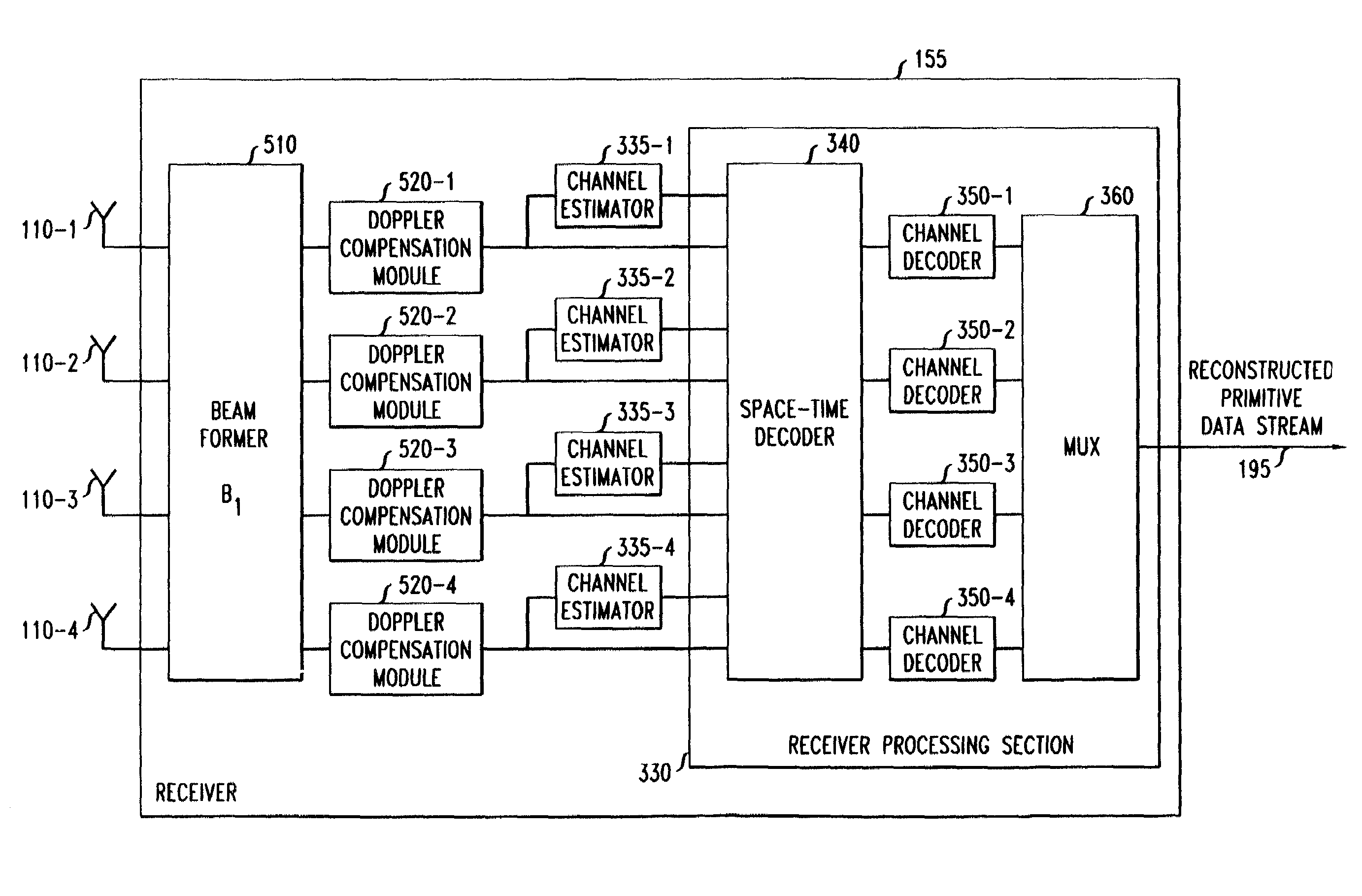Slowing the observed rate of channel fluctuations in a multiple antenna system
a multiple antenna and channel fluctuation technology, applied in diversity/multi-antenna systems, electromagnetic wave modulation, modulation, etc., can solve the problem that the channel characteristics that are obtained at the receiver in such a case are inaccurate, and the receiver does not accurately know the channel characteristics. to achieve the effect of accurate channel estimation
- Summary
- Abstract
- Description
- Claims
- Application Information
AI Technical Summary
Benefits of technology
Problems solved by technology
Method used
Image
Examples
Embodiment Construction
[0033]FIG. 1 shows a multi-input, multi-output wireless communication system 100 having four transmit antennas 105-1, 105-2, 105-3 and 105-4, and four receive antennas 110-1, 110-2, 110-3 and 1104. In system 100, primitive data stream 115 (i.e., the data stream to be transmitted) is supplied to transmitter 120. Transmitter 120 processes primitive data stream 115 using well-known techniques. In an illustrative embodiment of the invention, transmitter 120 divides primitive data stream 115 into data sub-streams. The data sub-streams can be channel coded and are mapped into symbol space to produce symbol sub-streams. The symbol sub-streams are space-time coded to form space-time coded symbol sub-streams, which are transmitted over antennas 105-1, 105-2, 105-3, and 105-4.
[0034]The signal path between a transmit and receive antenna is commonly referred to as a channel. Each channel has its own channel characteristic. The channels between each pair of transmit and receive antennas are show...
PUM
 Login to View More
Login to View More Abstract
Description
Claims
Application Information
 Login to View More
Login to View More - R&D
- Intellectual Property
- Life Sciences
- Materials
- Tech Scout
- Unparalleled Data Quality
- Higher Quality Content
- 60% Fewer Hallucinations
Browse by: Latest US Patents, China's latest patents, Technical Efficacy Thesaurus, Application Domain, Technology Topic, Popular Technical Reports.
© 2025 PatSnap. All rights reserved.Legal|Privacy policy|Modern Slavery Act Transparency Statement|Sitemap|About US| Contact US: help@patsnap.com



